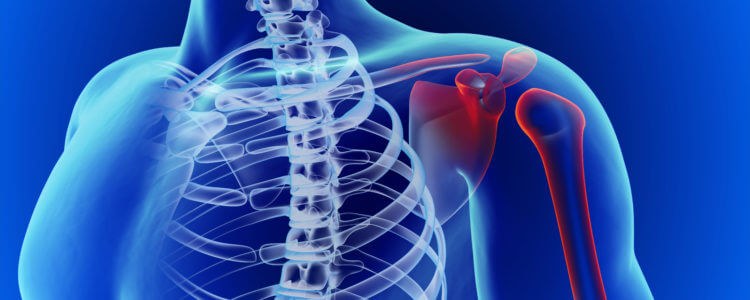
Four Causes of Wrist and Hand Pain
June 25, 2020
The Motions of the Shoulder Joint
August 15, 2020Successful shoulder replacement surgeries account for 90% of all shoulder and elbow surgeries in the US yearly. Shoulder arthritis is the most common cause of shoulder replacement surgery. However, this type of surgery is not helpful for patients with complex types of shoulder arthritis such as cuff tear arthropathy. This condition involves a large rotator cuff tear. Patients with this condition may experience limited motion and pain when subjected to conventional shoulder replacement surgery. The better option is a reverse shoulder replacement surgery.
Conventional vs. reverse shoulder replacement surgery
The conventional or regular shoulder replacement surgery simulates the normal function and movement of the shoulder. The process involves a plastic cup that is inserted into the shoulder socket (glenoid). The surgeon will attach a metal ball to the top of the upper arm bone (humerus).
In the reverse shoulder replacement surgery, the metal and the socket switch positions. The surgeon fixes the metal ball in the socket and the plastic cup positions on the upper end of the humerus.
The difference between the conventional versus the reverse replacement surgery is the position of the ball and socket parts of the shoulder joints. They reverse their natural positions.
The patient must be able to comply with the required conditions of the total Reverse Shoulder Replacement Surgery before they go under the knife. If you want to know if you qualify, set an appointment with a shoulder and elbow surgery specialist.
Who should undergo reverse shoulder replacement surgery?
Patients with the following conditions are candidates for total reverse shoulder replacement surgery:
- An irreparable and completely torn rotator cuff
- Cuff Tear Arthropathy
- An unsuccessful shoulder replacement surgery
- Severe shoulder pain
- Difficulty lifting your arm away from your side or over your head
- A complex shoulder joint fracture
- A chronic dislocation of the shoulder
- A tumor of the shoulder joint
- Chronic shoulder pain cannot be relieved from standard treatments such as rest, medication, physical therapy, and cortisone injections
Shoulder prosthesis
Reverse shoulder prosthesis uses screws on the socket side to place it in position. The screws hold the plate attached to the bone of the shoulder blade. The metal ball screws into the plate that has been connected to the socket.
The part of the prosthesis that is placed into the arm bone uses cement that acts as the glue between the metal prosthesis and the bone. The surgeon presses the plastic socket piece at the other end of the prosthesis to fit into the end of the stem. It is secured by locking it into the metal ball on the shoulder blade. This allows the socket to move to allow the shoulder to restore normal motion. The muscles surrounding the prosthesis keep the parts fixed in place.
After the surgery
- Follow the prescribed exercise program.
- From the day of surgery up to 6 weeks, avoid extreme arm positions such as behind your body or arm straight.
- Don’t overdo physical activities.
- From 4 to 6 weeks after surgery, don’t lift anything heavier than 5lbs.
- Don’t participate in heavy lifting after shoulder replacement surgery.
- Don’t push yourself up out of bed or chair since it requires muscle force contractions.
It is common for your doctor to prescribe post-surgical physical therapy after your shoulder replacement surgery. Those who live near Sauk Prairie can receive their physical therapy at Maplewood Sauk Prairie.
Sources:
https://orthoinfo.aaos.org/en/treatment/reverse-total-shoulder-replacement/


